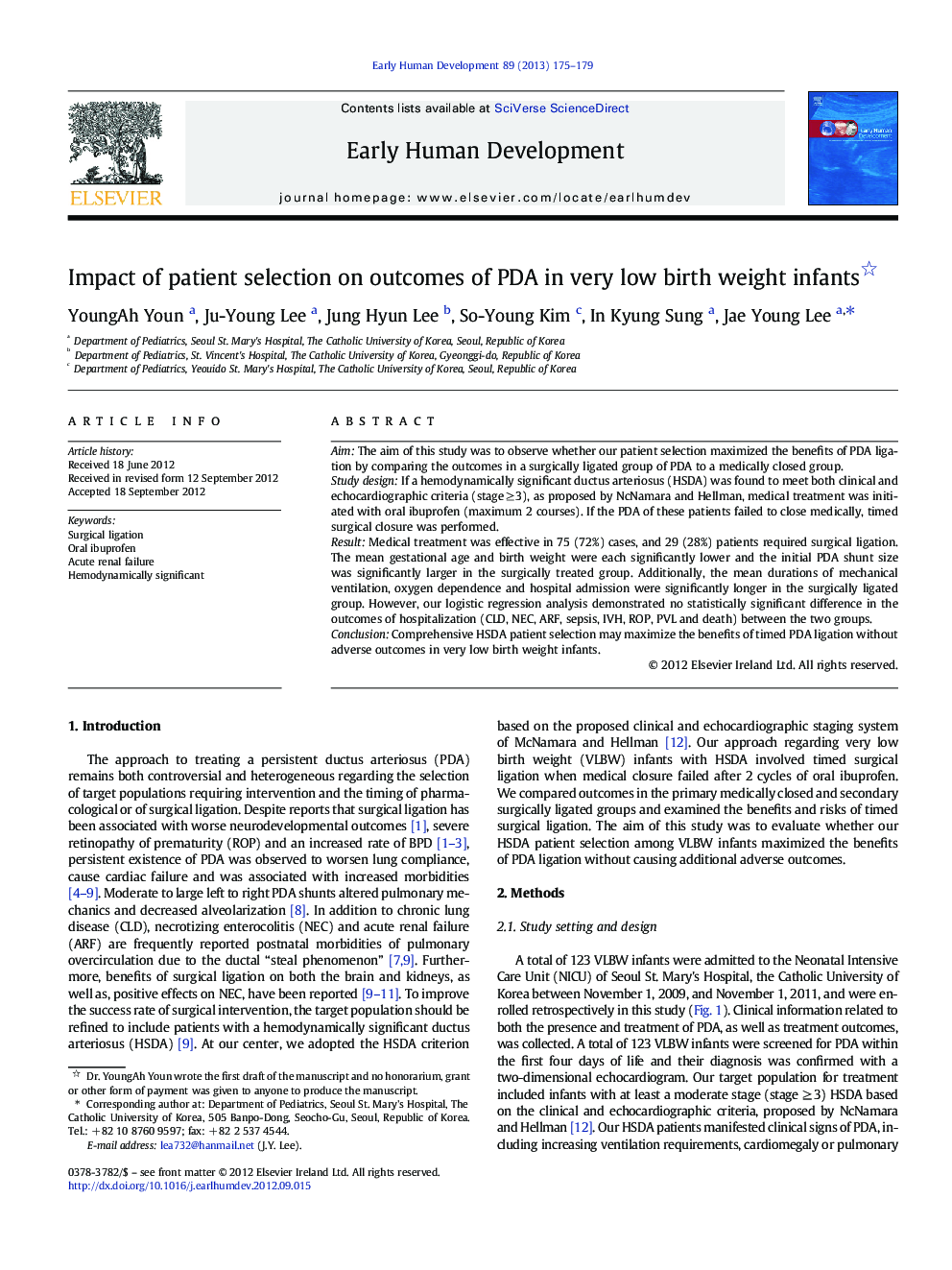| Article ID | Journal | Published Year | Pages | File Type |
|---|---|---|---|---|
| 3918251 | Early Human Development | 2013 | 5 Pages |
AimThe aim of this study was to observe whether our patient selection maximized the benefits of PDA ligation by comparing the outcomes in a surgically ligated group of PDA to a medically closed group.Study designIf a hemodynamically significant ductus arteriosus (HSDA) was found to meet both clinical and echocardiographic criteria (stage ≥ 3), as proposed by NcNamara and Hellman, medical treatment was initiated with oral ibuprofen (maximum 2 courses). If the PDA of these patients failed to close medically, timed surgical closure was performed.ResultMedical treatment was effective in 75 (72%) cases, and 29 (28%) patients required surgical ligation. The mean gestational age and birth weight were each significantly lower and the initial PDA shunt size was significantly larger in the surgically treated group. Additionally, the mean durations of mechanical ventilation, oxygen dependence and hospital admission were significantly longer in the surgically ligated group. However, our logistic regression analysis demonstrated no statistically significant difference in the outcomes of hospitalization (CLD, NEC, ARF, sepsis, IVH, ROP, PVL and death) between the two groups.ConclusionComprehensive HSDA patient selection may maximize the benefits of timed PDA ligation without adverse outcomes in very low birth weight infants.
